#RASM
Explore tagged Tumblr posts
Photo

New Post has been published on https://themesnulled.us/rasm-beauty-spa-care-nail-salon-html-template/
Rasm – Beauty Spa Care & Nail Salon HTML Template
0 notes
Text
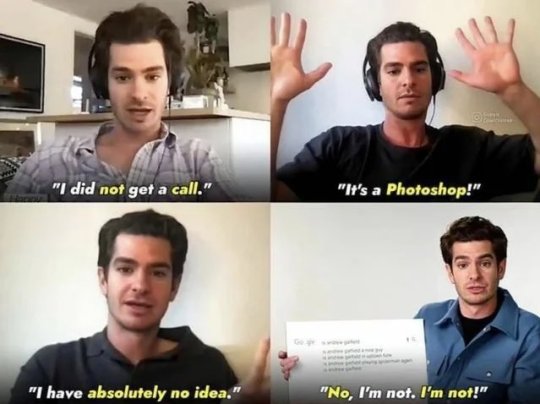
Happy April Fool’s Day for us, fans of ANDREW GARFIELD and Spider-Man (in 2021).
(source)
#april fool's day#andrew garfield#i miss these days#beautiful liar#i forgive you for lying to us#peter 3#peter parker#spider man#spider man no way home#nwhpeter3#spider man nwh#nwh#tasm peter parker#tasm spiderman#andrew peter parker#andrew peter#andrew spiderman#tasm peter#rasm spidermn#andrew garfield peter parker#andrew garfield spiderman#collage#interview#sincericida
125 notes
·
View notes
Text
Rojdestvo Santa Rojdestvo daraxti tasvirini sotib oling
Yangi yil va Rojdestvo bayramlari yaqinlashmoqda. Ushbu shirin va quvonchli davrda biz sizni bizning ajoyib suratlarimiz bilan tanishtirishni xohlaymiz. Bayram ruhini va go'zalligini aks ettiradigan suratlarimiz, har qanday proyekt uchun mukammal tanlovdir. Bizning suratlarimiz orqali bayram kunlaridagi hayajon va quvonchni his eting.
Bizning kolleksiyamizda Rojdestvo mavzusidagi ko'plab suratlar mavjud. Ushbu suratlar, sizning loyihalaringizga yangilik va jonlilik qo'shish uchun mo'ljallangan. Har bir surat, bayramning mehr-muhabbatini va iliqligini aks ettiradi, siz esa o'zingizning g'oyangizni ifodalashingiz uchun kerakli materiallarni topasiz.
Kolleksiyamizda, an'anaviy Rojdestvo sahnalari, go'zal daraxtlar, chiroyli bayram dekoratsiyalari va quvnoq dam olish sahnalari bor. Bizning suratlarimiz yuqori sifatda ishlab chiqarilgan bo'lib, har qanday loyihada qo'llash uchun mo'ljallangan. Ularni ijtimoiy tarmoqlarda, reklama materiallarida yoki boshqa bayramga oid ishlarda bemalol ishlatishingiz mumkin.
Agar sizga bayramga oid quvnoq va kulgili suratlar kerak bo'lsa, bizda ularning ham keng tanlovi mavjud. Santa Klaus, Rojdestvo bayrami va qishki go'zalliklarni aks ettiruvchi suratlar, sizning bayram tabriklaringizga quvonch va kulgu qo'shadi. O'ziga xos tasvirlar orqali sizning xabaringiz ko'proq e'tiborni jalb qiladi.
Biz suratlarimizni yaratishda sifatni birinchi o'ringa qo'yamiz. Har bir surat, yuqori sifatli kamera va professional uslubda suratga olingan. Sizning ijodingizni ifodalashda bizning suratlarimiz sizga yordam berishini xohlaymiz. Rojdestvo ruhini va bayram kayfiyatini ifodalovchi suratlar bilan o'z loyihalaringizni yanada jozibador qiling.
Bizning platformamiz orqali siz kerakli suratlarni tezda topishingiz mumkin. Kategoriyalar, ranglar yoki mavzular bo'yicha saralash orqali siz o'zingizga yoqqan suratlarni osonlik bilan topasiz. Sizga kerakli tasvirni topish jarayoni juda oson va tezkor.
Agar sizda biron savol yoki yordam kerak bo'lsa, bizning mijozlarga xizmat ko'rsatish jamoamiz har doim yordam berishga tayyor. Sizga kerakli suratni tanlashda yoki bizning shartlarimiz bo'yicha ma'lumot olishda sizga yordam beramiz. Biz sizning ehtiyojlaringizni tushunamiz va yordam berishdan xursand bo'lamiz.
Rojdestvo va Yangi yil bayramlari o'zaro mehr, samimiyat va quvonch bilan to'la. Bizning suratlarimiz sizning proyektlaringizga bayram ruhini qo'shib, har bir daqiqangizni unutilmas qiladi. O'z loyihalaringizni bizning suratlarimiz bilan bezatib, ularni yanada jozibador qiling.
Suratlarimiz nafaqat estetik jihatdan go'zal, balki hissiy jihatdan ham kuchli. Ular orqali siz o'zingizning his-tuyg'ularingizni va bayram muhitingizni ifodalashingiz mumkin. Biz sizning ijodingizni qo'llab-quvvatlaymiz va bizning suratlarimiz sizga ilhom berishini xohlaymiz.
Shuni unutmangki, Rojdestvo – bu nafaqat bezak va ko'rinish, balki ruhiy bayram. Bizning suratlarimiz sizga bu ruhni his qilishda yordam beradi. Rojdestvo bayramining jozibasi va mehrini his eting. O'z ishlaringizni ushbu bayram uchun maxsus suratlar bilan bezang.
Sizni ajoyib suratlar bilan kutib olishni sabrsizlik bilan kutyapmiz. Bizning kolleksiyamizda har bir loyihangiz uchun mos suratlar mavjud. Bayram ruhini, go'zallikni va xotiralarni yaratishda bizning suratlarimiz sizga yordam beradi.
O'z ijodiy g'oyalaringizni bizning suratlarimiz bilan jonlantiring. Rojdestvo bayrami bilan bog'liq suratlarni xarid qilish orqali o'z loyihalaringizga yangilik va energiya qo'shing. Bu yilgi bayramni o'ziga xos va unutilmas qilish uchun suratlarimizdan foydalaning.
Bizning kompaniyamizga qiziqqaningiz uchun rahmat! Rojdestvo bayrami va yangi yil sizga omad, quvonch va yaxshi kayfiyat olib kelsin!
#Rojdestvo#yangi yil#bayram#Santa#Rojdestvo daraxti#qish#qor#sovg'alar#oila#odamlar#bolalar#reklama uchun fon#muharrir uchun tekstura#marketing uchun rasm#internet marketing uchun rasm#muharrir uchun shablon#ish stoli uchun devor qog'ozi#e'lonlar#fon#internet marketing uchun fon#fon rasmi#ekran pardasi#sanʼat#dizayn#illyustratsiya#tushuncha#ijodiy#kollaj#tekstura#stiker
0 notes
Text
लाचार बाप : रस्म रिवाजो की बीच फंसा लाचार बाप का दर्द
रस्म रिवाजो की बीच फंसा लाचार बाप का दर्द एक लाचार बाप का दर्द कोई क्या जाने, 2 लाख का दहेज़, 50 हजार का खाना, घड़ी पहनायी, अंगूठी पहनाई, मंडे का खाना फिर सब सुसरालियो को कपड़े देना। बारात को खिलाना फिर बारात को जाते हुए भी साथ में खाना भेजना, जैसे बेटी हो गई कोई सज़ा हो गई, और यह सब तब से शुरू होता है जबसे बातचीत यानी रिश्ता लगता है। फिर कभी ननद आ र��ी है, जेठानी आ रही है कभी चाची सास आ रही है…

View On WordPress
#lacahar bap ka dard#rasm rivaj#shadi#The pain of a helpless father#wedding#दिलचस्प बाते#लाचार बाप की कहानी
0 notes
Text
Contact Us | Rasm Advisors
Contact us on our mail id that is Email:[email protected] and reach out to us about any support queries.
0 notes
Text
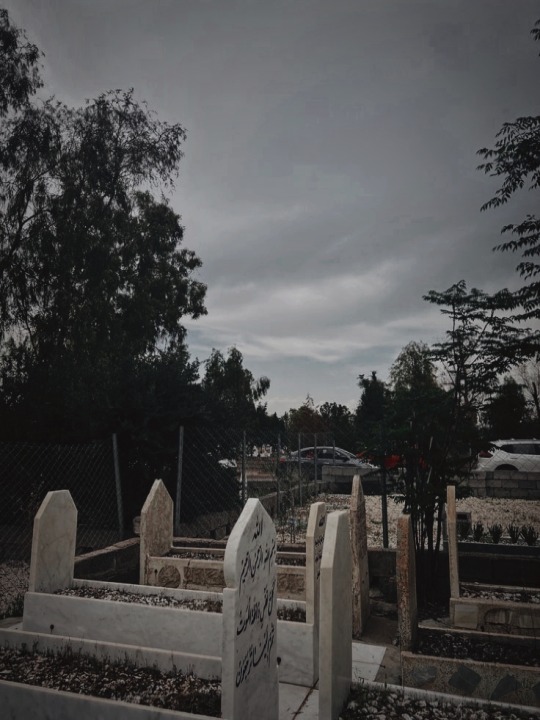
Allama Iqbal said>>>
Ye Kafan, ye Qabr
Ye janaze, rasm
Shariyat hai iqbal
Mar to insaan tab hi jata hai
Jab yaad karne wala koi na ho...🥀
#allama iqbal#deep words#garth of shayeris#urdu lines#urdu literature#urdu poetry#urdu ghazal#urdu shayari#urdu stuff#love quotes#shayri#love#urdu aesthetic#aesthetics#aestethic#urduposts
57 notes
·
View notes
Text
Last notes and final thoughts on Creating the Quran:
A text does not become fixed at its first writing; ancient and especially sacred writing remain open and in flux for a considerable period after. Even after it was written down, the Quran was a text "in process."
The rasm (the consonantal "skeleton" of the Quran) does show extraordinary constancy from the time of Abd al-Malik; its vocalization was in dispute for centuries after. But the tremendous fluidity of the oral phase of development did come to an end.
Lol, the name of a scholar cited in this chapter is "Assmann."
Oral tradition can coexist with a written canon for a time: even once the Gospels had been written down, ancient writers rarely cited them word-for-word, often using relatively free transmissions and maintaining the vibracy of oral tradition. A similar process may have been at work around the Quran.
Sometimes searching for an "original text" when it comes to texts like these (including the Gospels, for instance, or the books of the Hebrew Bible) may even be meaningless; the early text-forms are in dialogue with the late oral-forms, and the former are not being produced with the specific end of creating a fixed, canonical text. Concepts like individual authorship, a complete and self-contained textual artifact, and formal publication don't necessarily apply. Canonized texts can start out as essentially aids to memory, or personal notes, that existed to be revised and extended as necessary.
The early regional codices could have grown out of such memoranda, only gradually being reshaped into more complete and polished texts. This would help account for why the Quran often repeats the same tradition in different forms, sometimes with minor differences and sometimes with significant contraditions.
For works like the Gospels, Matthew and Mark might have even been regarded as functionally "the same text" in the same way even very different oral performances of a story can be considered "the same."
The evident parallel traditions in the Quran may derive from the retelling and recomposition of traditions in different communities, or from ongoing revisions to an open text. Many of these parallel traditions are Christian ones, or Jewish ones that seemed to enter the text from Christian sources.
Extensive biographical tradition within Islam around Muhammad in particular; but it's unlikely (for reasons discussed earlier) to be reliable. The small grains of historicity within it are obscured by the narrative that has grown around them.
Some traditions in the Quran appear to originate from before Muhammad's prophetic mission, distinguished by their utter lack of intelligibility for early Muslim commentators. This indicates they were not passed down orally, since they were not altered in ways to make them relevant to the community, and so may have been written down when Muhammad and his earliest followers encountered them.
Bellamy argues there are more than two hundred words in the Quran that later commentators not only didn't understand, but didn't know how to vocalize. These could be the result of copyists' mistakes, but they're present in all Quran manuscripts, and so would have to go back to a single version.
Example: "Yuhanna" ("John") being read as "Yahya," because of the ambiguity between and without consonant-pointing. With just the rasm, Yahya is a perfectly good guess--whoever first read "Yahya" in the passages where it occurs cannot have had an oral tradition preserving the sound of the name, or prior knowledge of John the Baptist, or they would have recognized it on the basis of context.
Surat Quraysh was very opaque to interpreters, who had no better understanding of this sura than we do today; the meaning of the key term "ilaf" seems to be entirely opaque, leading to a wide array of interpretations. Difficult to reconcile this lack of understanding with Muhammad teaching it to his followers.
Final editing of the Quran must have been very conservative to retain these infelicities--typical of scriptural traditions, or at least of the Hebrew Bible and New Testament.
Patricia Crone proposes some parts of the Quran predate Muhammad. Michael Cook says OTOH maybe the materials that make up the Quran didn't become "generally available as scripture" until well after Muhammad's death. Neither supposition is exclusive of the other.
Gerd Puin argues that "every fifth sentence" or so "simply doesn't make sense." Gerald Hawting observes "the text taken on its own is often completely unintelligible, filled with grammatical and logical discontinuities." This puts me in mind with the weird way different sources are jammed together in the Hebrew Bible, sometimes totally muddling narratives that were clear in the original--I don't wonder if part of the problem is that different regional codices, when brought together, were harmonized in a very conservative way that left a lot of contraditions and discontinuities in the text.
Shoemaker thinks the best model is still the one where the Quran is largely rooted in Muhammad's teachings, with the inclusion possibly of some archaic and imperfectly understood textual materials, and with considerable change introduced in the process of transmission before final canonization.
Quran talks about seafaring and fishing familiarly, both things alien to Mecca and Yathrib. Ditto agriculture and vegetation, especially kinds not found even in the Yathrib oasis. Most likely elements that found their way in once the Islamic polity had reached the shores of the Mediterranean.
Similarly out of place geographical references: Sodom and Gomorrah as places passed by daily; as the audience living not far from where Lot once dwelled. Landscape of memory here is focused on Palestine, not Hijaz.
Heavy borrowing of words, including from Syriac and Hebrew, in the language of the Quran, indicating heavy linguistic contact with the Fertile Crescent.
"Vast knowledge of Christian lore" despite no Christian presence in Mecca or Yathrib, in either the Islamic tradition or elsewhere. Quran assumes good knowledge of the Torah and Gospels and many extrabiblical traditions also. The Quran's presentation of many figures from the Hebrew Bible draws specifically on Syriac Christian traditions, and not on Jewish traditions as you might suppose from the traditional account of Jews present in Medina. Its anti-Jewish rhetoric and demonology depend on earlier Christian traditions, and some passages seem to address Christian directly.
Removing Muhammad and the Quran completely from the Hijaz would make it hard to explain why Mecca and Yathrib eventually came to be so important in later tradition. It seems likely that, even though the Holy Land and Jerusalem stood at the center of the imagination of early believers, there was some historical connection to the Hijaz, and only as they began to more self-consciously differentiate themselves from Christians and Jews around them did they shift their focus to this element of their history.
It's not necessary (or tenable) to entirely detach the Quran from the figure of Muhammad. Some material in it almost certainly derives from his prophetic career in Mecca and Medina. In some cases, followers later added blocks of textual material already written down in a religious context somewhere outside the Hijaz, alongside entirely new traditions emerging from cross-cultural contact.
19:22-28 gives a compressed account of the Nativity that is found only in the liturgical practice of a particular Marian shrine just outside Jerusalem, the Kathisma church. This tradition is so obscure it's unlikely it independently made its way to the central Hijaz--it joined the corpus most likely after Muhammad's followers took control of the region, and converted this church into a mosque.
Like almost all other sacred texts of its type, the Quran is not a "book" but a corpus: texts not originally intended to be grouped together, heterogenous in origin and function, and in some cases dependent or independent of one another. Composite, but also composed, i.e., put together intentionally and carefully using techniques from a literate context, with literary polish.
71 notes
·
View notes
Text
Dard se mere hai tujhko beqarari haaye haaye, Kiya hui zaalim teri ghaflat-sheari haaye haaye
Tere dil mein gar na tha aashob-e-gham ka hosla, Tu ne phir kyun ki thi meri gham-gusaari haaye haaye
Kyun meri gham-khargi ka tujhko aiya tha khayal, Dushmani apni thi meri dost-daari haaye haaye
Umr bhar ka tu ne paeman-e-wafa bandha to kiya, Umr bhar ko bhi to nahi hae paedaari haaye haaye
Zahar lagti hae mujhe aab-o-hawa-e-zindagi, Yaani tujh se thi ise nasaaz-gaari haaye haaye
Gul-fishaani hai, naz-e-jalwa ko kiya ho gaya? Khaak per hoti hae teri lalakaari haaye haaye
Sharm-e-rusawaae se ja chupna naqaab-e-khaak mein, Khatam hae ulfat ki tujh per parda-dari haaye haaye
Khaak mein namoos-e-paeman-e-muhabat mil gae, Uth gai se dunya se rah-o-rasm-e-yari haaye haaye
haath hi tegh-azma ka kaam se jaata raha dil pe ik lagne na paaya zakhm-e-kaari haaye haaye
kis tarah kaate koi shab-ha-e-tar-e-barshigal hai nazar khu-karda-e-akhtar-shumari haaye haaye
gosh mahjur-e-payam o chashm-e-mahrum-e-jamal ek dil tis par ye na-ummid-vaari haaye haaye
Ishq ne pakra na tha Ghalib abhi wehshat ka rang, Reh gaya dil mein jo kuch zauq-e-khari haaye haaye
Dard se mere hae tujhko beqarari haae haae, Kiya huwi zaalim teri ghaflat-sheari haaye haaye
–Ghalib
6 notes
·
View notes
Text

"Eid par galey mil ke usne dheere se kaha, yeh duniya ki rasm hai, isey mohabbat na samajh lena"
- unknown
12 notes
·
View notes
Photo
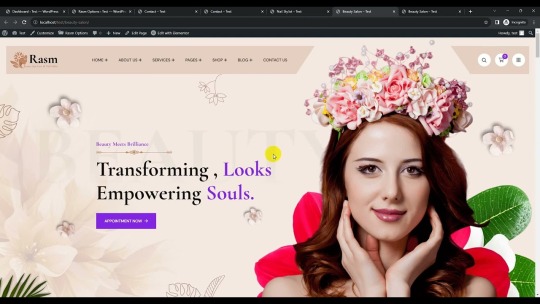
New Post has been published on https://themesnulled.us/rasm-v1-0-0-beauty-spa-care-nail-salon-wordpress-theme/
Rasm v1.0.0 – Beauty Spa Care & Nail Salon WordPress Theme
0 notes
Text
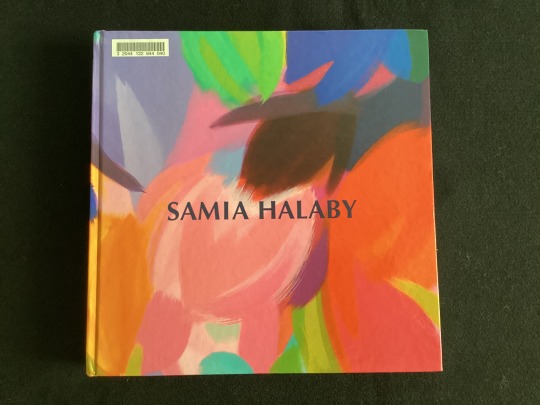
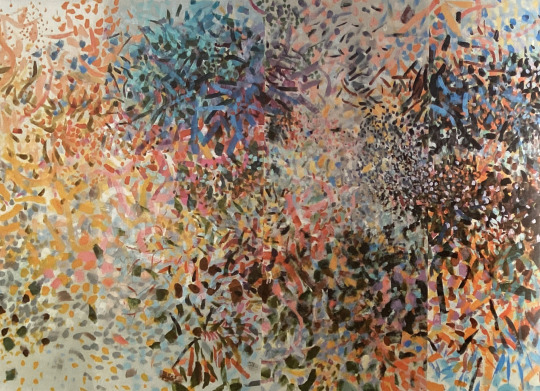
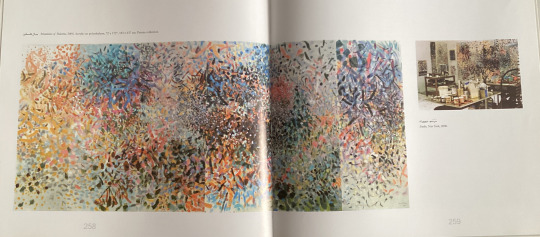
This month during Women’s History Month, we are honoring many trailblazing women artists.
Palestinian American artist, scholar, and art historian, Samia Halaby (b. 1936) is known for her vibrant abstract work. Halaby was eleven years old when she and her family were displaced from Palestine to Lebanon in 1948. In 1951, Halaby emigrated to Ohio in the United States. She was educated in the American Midwest and became a trailblazer when there were few female abstract painters. In her work, Halaby draws inspiration from her homeland—the textures and landscapes of Palestine such as native trees and Islamic architecture and geometry.
Image 1: Book cover
Image 2: “Mountains of Palestine,” detail, 2000, Acrylic on polyethylene, 72”x 172”
Image 3: “Mountains of Palestine” and studio view
Samia Halaby : five decades of painting and innovation [text, Maymanah Farhat]. Halaby, Samia. Added t. pg. title: Sāmiyah Ḥalabī : khamsat ʻuqīd min al-rasm wa-al-ibtikār سامية حلبي : خمسة عقود من الرسم والابتكار Beirut : Ayyam Gallery, [2010] English French Arabic HOLLIS number: 990129614060203941
#SamiaHalaby#WomensHistoryMonth#WomenArtists#PalestinianAmericanArtist#AbstractArtist#HarvardFineArtsLibrary#Fineartslibrary#Harvard#HarvardLibrary
14 notes
·
View notes
Text
A beautiful nazm "dua'a" by Faiz sahab.
P.S. I wish I could write this in devnagari. Ghazals look so beautiful when written in Hindi or Urdu, English romanisations take away the beauty of matras and diacritics! Anyways here it is...
Dua'a
Poet: Faiz Ahmed Faiz (1911 – 1984)
Aaiye hath uthaiyeN hum bhi
Hum jinheN rasm-e-dua yaad nahiN
Come, let us raise our hands, as well –
We, the ones who do not remember the ritual of prayer
Hum jinheN soz-e-mohabbat ke siwa
Koyee butt koyee khuda yaad nahiN
We, the ones who [do not remember] anything other than the warmth of love,
do not know of any idol, nor any God.
Aaiye arz guzaraiN keh nigaar-e-hasti
Zehr-e-imroz meiN sheereeni-e-farda bhar de
Come, let us beseech that the Creator of existence may
fill sweetness in the morrow from the poison of today
Woh jinheN taab-e-garaaN baariye ayyam nahiN
Un kee palkoN peh shab-o-roz ko halka kar de
Those who cannot bear the burden of passing day,
May their eyelids be unburdened of the day and night
Jinn kee aankhoN ko rukh-e-subh ka yaara bhi nahiN
Un ki raatoN meiN koi shama munawwar kar de
They, whose eyes don’t have the strength to see the face of dawn,
May someone light a lamp in their night
Jin ke qadmoN ko kisi reh ka sahara bhi nahiN
Un ki nazroN pe koyee raah ujaagar kar de
They, whose feet have nowhere to go, no path
May someone illuminate a way to their sight
Jin ka deeN pairawi-e-kizb-o-riya hai un ko
Himmat-e-kufr milay jurrat-e-tehqeeq milay
They, whose religion is lies and deceit
May they get the courage to be heretics, and the audacity to question
Jin ke sar muntazir-e-tegh-e-jafa haiN un ko
Dast-e-qatil ko jhatak dainay ki taufeeq milay
They, whose heads await the swords of cruelty… to them
The power to ward of the hands that slay
Ishq ka sirr-e-nihaN jaan tipa hai jis se
Aaj iqrar kareiN aur tapish mit jaye
The hidden secret of love is a burning soul… with which
Let’s affirm today so the burning is eased
Harf-e-haq dil meiN khatakta hai jo kaante ki tarah
Aaj izhaar kareiN aur khalish mit jaye
The words of truth.. which rankle the heart like a thorn
Let’s proclaim them today to relieve the affliction
#heartbreak#depressing life#gay#ghazal#urdu poems#depressing poem#urdu ghazal#urdu stuff#urdu shayari#urdu literature#urdu lines#urdu poetry#urdu nazm#nazm#two line shayari#hindi shayari#sher o shayari#hindi love shayari#heartache#fuck you#letting go#mental health#why did you leave#what do i do#dark academism#desi dark academia#dark academia#dark urge#dark aesthetic#dark acadamia aesthetic
10 notes
·
View notes
Text
Yu hi hameshaa ulajhati rahi hai zulm se Khalq
Na unki rasm naii hai na apani riit naii
Yu hi hameshaa khilaaye hai humne aag me phuul
na unki haar naii hai na apanii jeet naii.
Thus always has the world grappled with tyranny
Neither their rituals nor our rebellion is new
Thus have we always grown flowers in fire
Neither their defeat, nor our final victory is new!!!
#gaza#free palestine#palestine#israel#israel is a terrorist state#urdu literature#urdu aesthetic#urdu shayari#urdu poetry#urdu lines#urdu stuff#desi academia#desi aesthetic
20 notes
·
View notes
Text
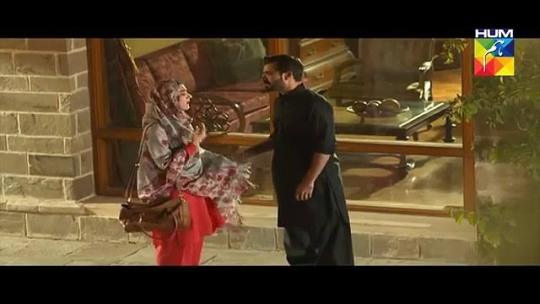
Eid ke din gale lagakar usne yeh kaha
Yeh duniya ki rasm hai isse mohabbat na samajh lena.
#Sher#shayar#shayara#shayari#urdu#urdu lit#Urdu adab#ishq urdu#urdu poetry#hindi poetry#urdu shayari#hindi shayari#urdu poems#hindi poems#ghazal#nazm#mushaira#ashaar#alfaaz#ghalib#Mir Taqi Mir#allama iqbal#Parveen Shakir#sahir ludhiyanvi#Faiz Ahmed Faiz#gulzar#Ahmad Faraz#Bashir Badr#urdu stuff
11 notes
·
View notes
Text
About Us | Rasm Advisors | Stock Market Tips Provider
About Rasm Advisors: Read our story to know our company.Visit now!
0 notes
Text
Be-naam fareha- Jaun Elia
UNNAMED FAREHA
Saari baatein bhool jana fareha Tha wo sab kuch ek fasana fareha
forget all the matters Fareha
it was all just a story Fareha
Haan mohabbat ek dhoka hi to thi Ab kabhi dhoka na khana fareha
yes, love was nothing but a deception
now never be deceived Fareha
Chhed de gar koi mera tazkera Sun ke tanzan muskurana fareha
if someone were to mention me
hear and smile sarcastically Fareha
Meri jo nazmein tumhare naam hain Ab unhein mat gungunana fareha
my poems that are named after you
now do not hum them Fareha
Tha faqat roohon ke naalon ki shikast Wo tarannum, wo taraana fareha
there was only the defeat of the drains of souls
that way of singing, that melody, Fareha
Bahes kya karna bhala halaat se Haarna hai, haar jana fareha
what to argue with the circumstances
have to get defeated, get defeated Fareha
Saaz-o-barg-e-aish ko meri tarah Tum nazar se mat giraana fareha
Do not let the luxurious belongings as i did
fall from your sight Fareha
Hai shaoor-e-gham ki ek qeemat magar Tum ye qeemat mat chukana fareha
there is a price to the awareness of sorrow but
do not pay this price Fareha
Zindagi hai fitratan kuchh bad-mizaaj Zindagi ke naaz uthaana fareha
Life is inherently somewhat unpredictable
bear with the whims of life Fareha
Peshkash mein phool kar lena qubool Ab sitaare mat mangana fareha
accept the offering of flowers
now don't ask for stars, Fareha
Chand weerane tasawwur mein rahein Jab nayi duniya basana fareha
when the deserted wilderness is in imagination
start a new life, Fareha
Jaanib-e-ishrat gah-e-shehar-e-bahaar Ho sake to milke jaana fareha
Towards the abode of joy, the city of spring
If possible, meet and go, Fareha
Sochta hun kis qadar tareek hai Ab mera baqi zamana fareha
I wonder how dark it is
Now, the rest of my time, Fareha
Sunn raha hun manzil-e-ghurbat se door Baj raha hai shadiyana fareha
I am hearing, being far from the destination of solitude
The wedding music is playing, Fareha
Mauj-zan pata hun main ek sail-e-rang Az-qafas-taa-aashiyana fareha
I know how to create waves, like a painter of colors
from the cage to the nest, Fareha
Ho mubarak rasm-e-taqreeb-e-shabaab Bar-murad-e-khusrawana fareha
Congratulations on the ceremony of youthful beauty
May your desires be fulfilled, Fareha
Saj ke wo kaisa laga hoga jo tha Ek khwaab-e-shayerana fareha
how would he have looked adorned, who was
a poetic dream Fareha
Sochta hun main, ke mujh ko chahiye Ye khushi dil se manana fareha
I think that i need to
wholeheartedly embrace this happiness Fareha
Kya hua gar zindagi ki raah mein Hum nahin shana-ba-shana fareha
What happens if on the path of life
we are not side by side Fareha
Waqt shayad aap apna jabr hai Us pe kya tohmat lagana fareha
Perhaps time in itself is tyranny
why accuse it, Fareha
Zindagi ek naqsh-e-be-naqqaash hai Us pe kya ungli uthana fareha
Life is an uncarved design
Why raise a finger at it, Fareha
Kash ek qanun hota jo nahin Zakhm apne kya dikhana fareha
I wish there was a law that didn't exist
Why show your wounds, Fareha
Kash kuch iqdaar hote jo nahin Phir bhala dil kya jalana fareha
I wish there were some choices that don't exist
why burn your heart, Fareha
Sirf ek jalti hui zulmat hai noor Taab-o-tabish par na jana fareha
light is only a burning darkness
dont be fooled by it's heat and fervor Fareha
Ye jo sab kuch hai ye shayad kuch nahin Rog jee ko kya lagana fareha
This everything that exists this might be nothing
why make the heart ill Fareha
Sail hai, bas be-karaan lamhon ka sail Gharq-e-sail-e-be-karaana fareha
It's a journey, just a collection of aimless moments
Drowning in the sea of purposeless journey, Fareha
26 notes
·
View notes